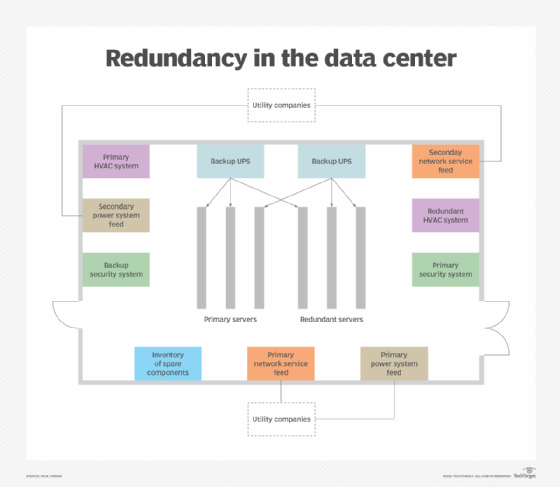If a Company Goes Bust Who Pays Redundancy? Legal Insights for UK Worker
If a Company Goes Bust Who Pays Redundancy? Legal Insights for UK Worker
Blog Article
Discovering the Operational Characteristics of Firm Redundancy and Its Long-Term Sustainability

Redundancy Strategies for Service Connection
In order to make certain nonstop operations, companies need to implement reliable redundancy methods for company continuity. Redundancy in this context describes the replication of vital parts or functions within a system to alleviate the effect of prospective failings. By integrating redundancy methods, organizations can improve their strength against disturbances triggered by various factors such as all-natural catastrophes, equipment failures, or cyber-attacks.
One usual redundancy strategy is the execution of backup systems and data storage services. This entails developing duplicates of essential data and systems that can be turned on in case of a main system failure. In addition, organizations can establish repetitive interaction channels and power sources to maintain connection and operations during unexpected occasions.
In addition, cross-training employees to perform numerous roles within the firm can function as a useful redundancy strategy. This makes certain that crucial tasks can still be accomplished also if crucial employees are unavailable as a result of disease or other factors. In general, effective redundancy techniques are essential for organizations to support operational continuity and decrease the impact of potential disruptions.
Influence of Redundancy on Organizational Durability
Provided the crucial duty redundancy strategies play in making sure service continuity, exploring the impact of redundancy on organizational durability becomes crucial for comprehending the holistic operational characteristics of a business. Organizational strength refers to an entity's capability to adapt to disruptions, recoup from obstacles, and transform when needed while preserving core functions. Redundancy, when tactically executed, can dramatically add to boosting a company's resilience despite unanticipated difficulties. By having backup systems, employees, or procedures in place, companies can better hold up against shocks and continue procedures with marginal interruption.
Moreover, redundancy can reinforce staff member spirits and confidence, knowing that there are backup strategies in position to address unforeseen scenarios. This complacency can result in boosted performance and a much more positive job atmosphere. In addition, redundancy can cultivate development and creative thinking within a company as staff members really feel encouraged to take calculated dangers, understanding that there is a security net to support them in instance of failing. Overall, the effect of redundancy on organizational resilience is profound, shaping the long-lasting sustainability and success of a business.
Stabilizing Performance and Flexibility in Redundancy
Achieving an unified balance in between operational performance and adaptive flexibility is a crucial difficulty in the strategic implementation of redundancy within organizations. Effective operations are crucial for preserving performance and cost-effectiveness, making sure that resources are used optimally. Nevertheless, too much emphasis on effectiveness alone can lead to rigidness, making it hard for organizations to adjust to unforeseen modifications or obstacles. On the other hand, adaptability allows organizations to react nimbly to evolving situations, cultivating innovation and durability. Yet, way too much versatility without a strong functional structure can lead to inefficiencies and incongruity.
To balance efficiency and flexibility in redundancy preparation, companies need to thoroughly analyze their functional needs, market characteristics, and calculated goals. Eventually, discovering the ideal equilibrium between efficiency and versatility is important for developing a lasting and durable organization in the face of uncertainty.
Long-Term Sustainability Via Redundancy Planning
To guarantee enduring stability and security, organizations should purposefully align their redundancy preparation with long-lasting sustainability objectives, thus balancing operational effectiveness with adaptive versatility. Lasting sustainability with redundancy preparation includes greater than simply short-term cost-cutting measures. It requires an extensive strategic technique that anticipates future challenges and opportunities. Firms must watch redundancy not as a responsive solution to prompt problems however as a proactive strategy for long-lasting success. By incorporating redundancy preparation with sustainability goals, companies can create a durable structure that can withstand different market variations and inner adjustments.

Aggressive Actions for Lasting Company Operations
How can firms proactively enhance their operational sustainability for long-term success? Applying positive procedures is necessary for business intending to guarantee sustainable procedures. One key approach is to buy innovation and innovation to simplify procedures, minimize waste, and stay competitive in the market. Taking on sustainable techniques such as minimizing energy usage, lessening carbon footprint, and maximizing source application can not just profit the redundancy if company goes bust setting but likewise bring about cost financial savings over time.
Additionally, cultivating a society of continuous renovation and discovering within the company can enhance versatility to changing market conditions and customer needs. Motivating staff member participation in decision-making processes and giving opportunities for professional growth can increase morale, efficiency, and total efficiency. Developing clear objectives, keeping track of crucial efficiency indicators, and frequently assessing development are vital elements of positive sustainability monitoring.
Working together with providers, consumers, and other stakeholders to advertise lasting practices throughout the supply chain can produce a causal sequence of positive impact - redundancy pay if company goes bust. By taking positive steps towards operational sustainability, companies can build strength, drive advancement, and secure their long-term success in an ever-evolving service landscape
Conclusion

In the world of organizational monitoring, the tactical release of business redundancy stands as an essential yet complex method that necessitates a fragile equilibrium in between operational efficiency and lasting stability. By dissecting the functional characteristics that underpin company redundancy and reviewing its more comprehensive implications for business durability and flexibility, a nuanced understanding of exactly how redundancy strategies can form the future trajectory of a firm begins to unravel.Provided the vital role redundancy approaches play in making certain company connection, checking out the impact of redundancy on business strength ends up being essential for comprehending the alternative functional characteristics of a top article company. Overall, the effect of redundancy on business resilience is profound, forming the lasting sustainability and success of a firm.
In verdict, understanding the functional dynamics of company redundancy is crucial for guaranteeing long-lasting sustainability.
Report this page